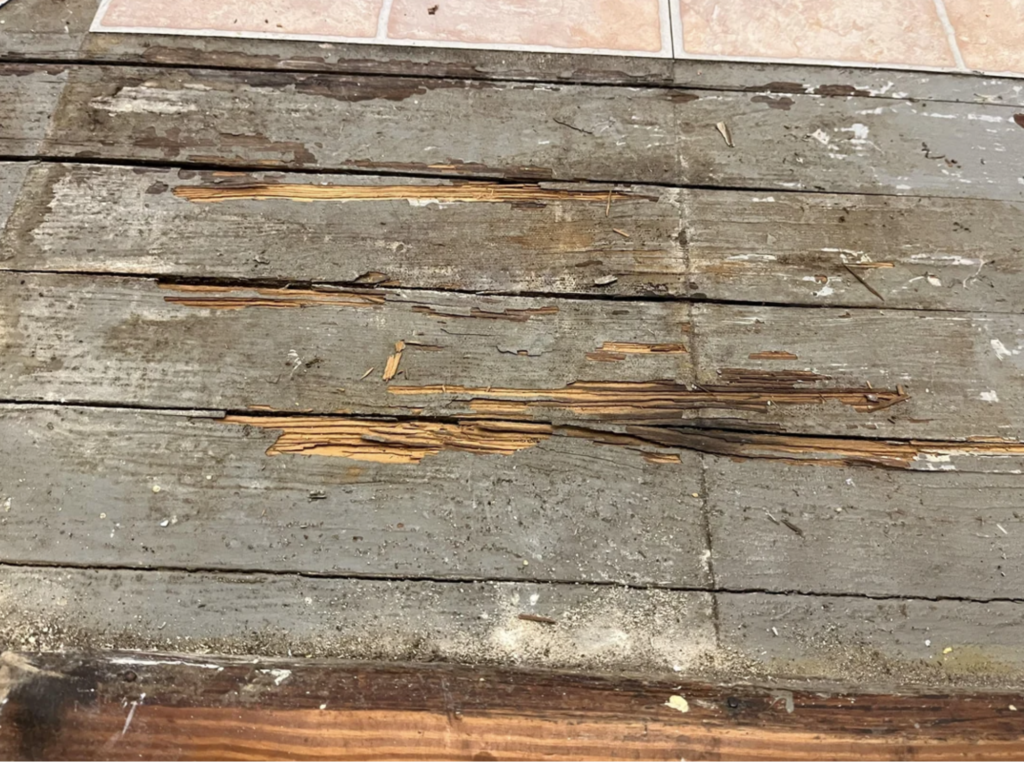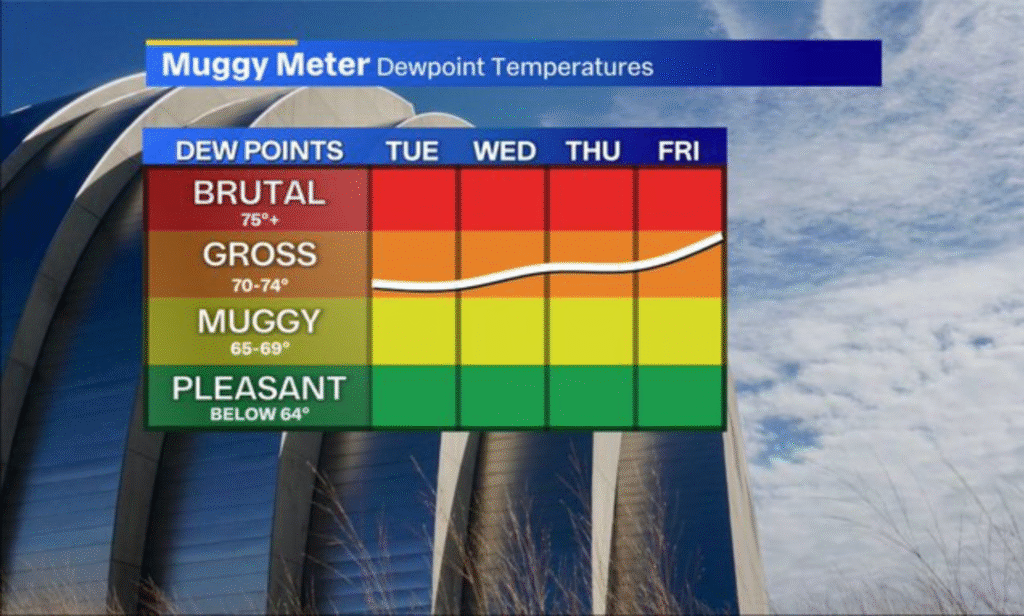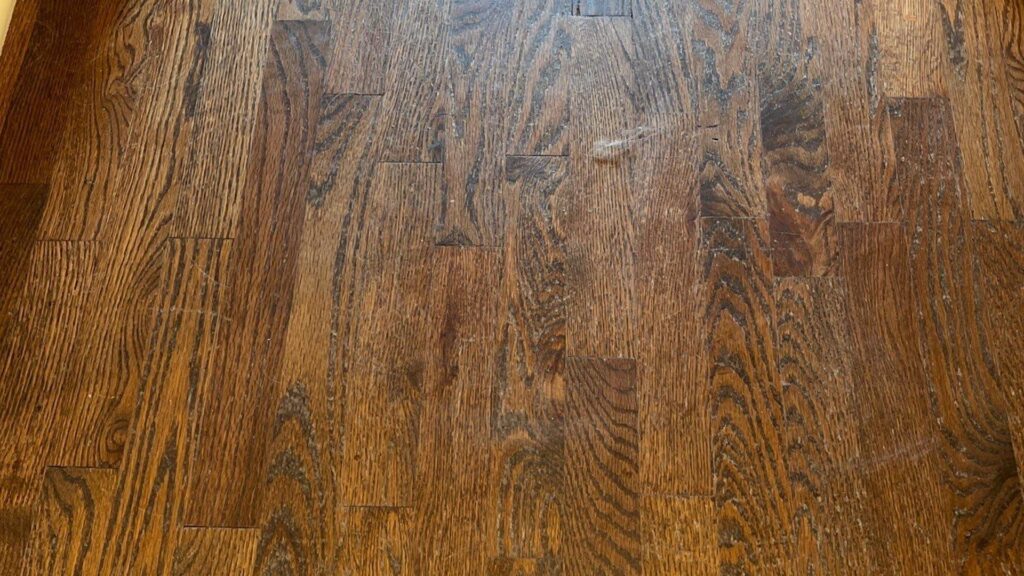The short answer? It depends on how well you care for them.
With the right maintenance and occasional refinishing, wood floors can last 100 years or more. But without care, they may need replacing in just 20 to 30 years. In this article, we’ll explore the true lifespan of solid and engineered wood floors—with and without refinishing—and show you how to make yours last a lifetime.
Let’s break it down.
Average Lifespan of Wood Flooring (With and Without Refinishing)
| Floor Type | With Refinishing | Without Refinishing |
| Solid Hardwood | 80–100+ years | 20–30 years |
| Engineered Hardwood | 30–40 years (avg) | 15–20 years |
Solid hardwood flooring is made from a single piece of wood and can be sanded and refinished multiple times—typically 4 to 7 times depending on the thickness. According to the National Wood Flooring Association (NWFA), some wood floors have been in service for over 300 years when maintained properly.
Engineered hardwood has a thinner real wood layer (called the veneer) on top of a plywood or HDF base. Most engineered floors can only be refinished once or twice—if the veneer is at least 2mm thick.
What Impacts the Lifespan of Wood Floors?
There’s no one-size-fits-all answer. The lifespan of your floor depends on a few key factors:
1. Maintenance Routine
- Regular sweeping and vacuuming keep grit from scratching the finish.
- Use wood-safe cleaners—never steam mops or wet mops.
- Apply maintenance coats (more on that below).
2. Foot Traffic and Activity Levels
- More people = more wear.
- Pets and kids increase scratch risk and denting.
3. Wood Species
Harder woods last longer. On the Janka Hardness Scale:
- Hickory: 1820
- Red Oak: 1290
- Pine: 870
Choose a harder species if you want maximum lifespan in high-traffic areas.
4. Finish Type
- Oil-based polyurethane tends to last longer than water-based.
- Natural oil finishes may need more frequent maintenance but are easier to recoat.
- Matte finishes show fewer scratches than glossy ones.
5. Sunlight Exposure
- UV rays cause fading and discoloration.
- Use rugs or UV-blocking window film to protect exposed areas.
6. Humidity and Moisture
- Wood expands and contracts with humidity.
- Maintain indoor relative humidity between 30–50% year-round to avoid gaps or cupping.
How Refinishing Extends Floor Life
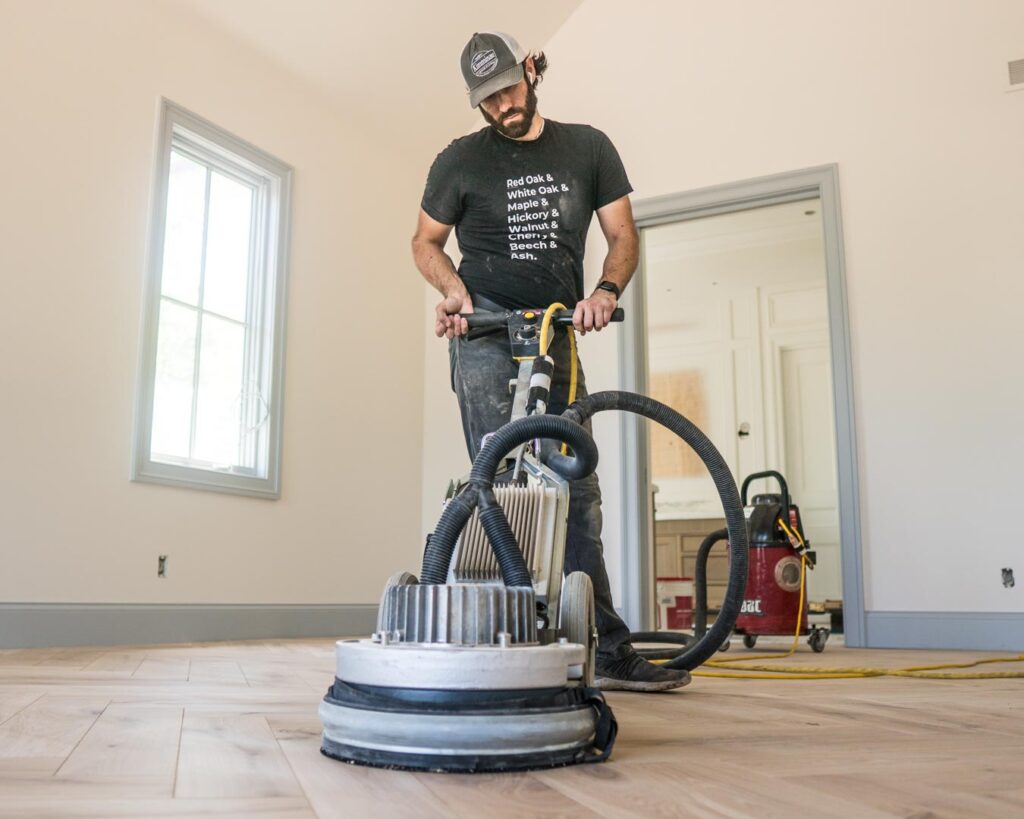
Refinishing means sanding the wood down to bare wood and applying a fresh finish.
According to the NWFA, you can refinish solid wood floors every 7–10 years, depending on traffic. Each refinishing can add another decade (or more) to your floor’s life.
Even better? If you maintain the finish well, you might not need a full refinish. That’s where maintenance coats come in.
Maintenance Coats: The Game-Changer
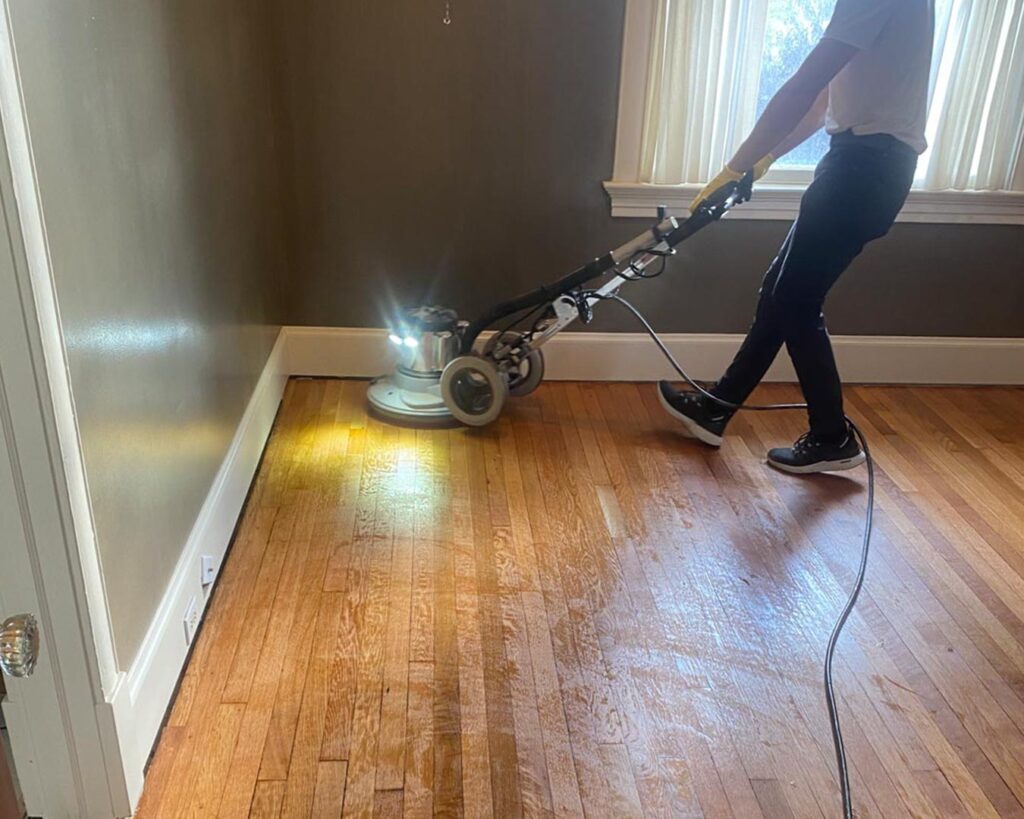
A maintenance coat—also called a “screen and recoat” or “clean & coat”—involves lightly buffing the surface and applying a new topcoat without sanding to bare wood. It:
- Restores luster
- Protects against wear
- Adds years to your finish
The NWFA recommends doing a maintenance coat every 3–5 years, especially in high-traffic areas.
Benefit: By applying maintenance coats regularly, you may be able to go 15–20 years before needing a full refinishing. That means fewer sandings, less cost, and longer floor life.
What Happens If You Never Refinish Your Floors?
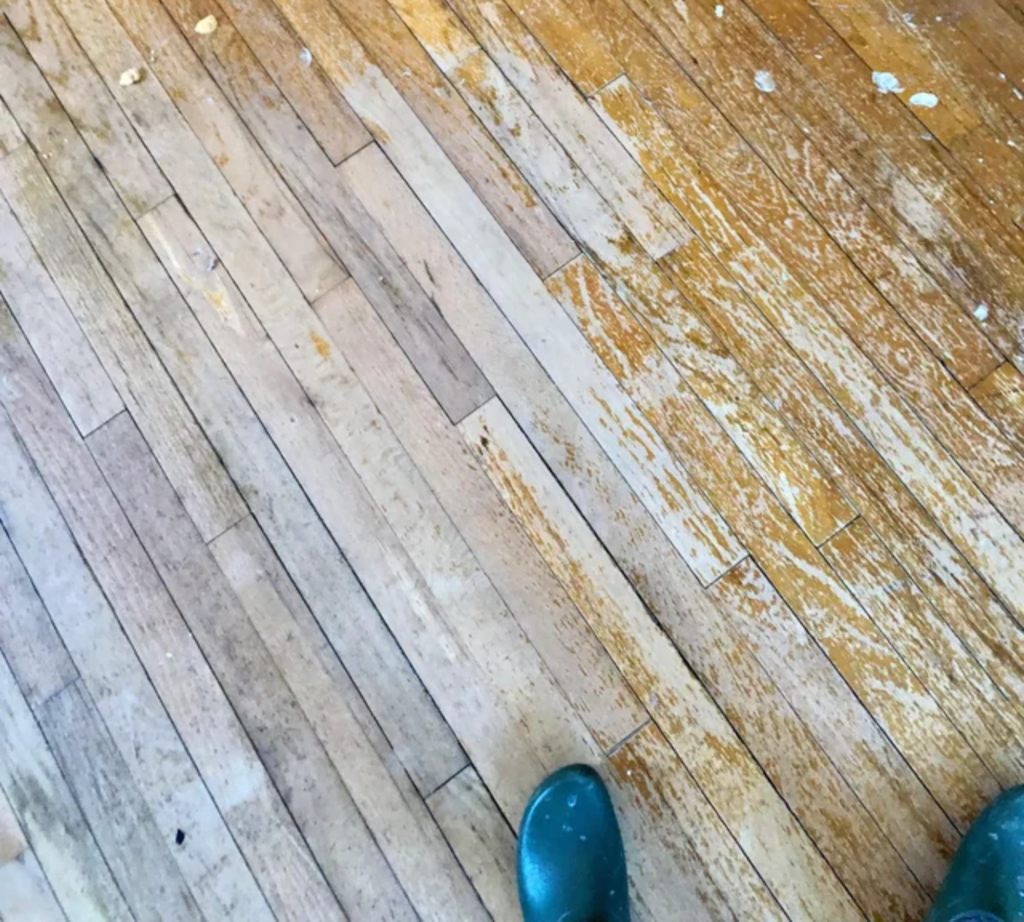
Skipping refinishing and maintenance coats shortens your floor’s life—plain and simple.
Here’s what happens:
- Scratches turn into gouges
- The protective finish wears off
- Water and grime soak into the raw wood
- Boards start to splinter or warp
At that point, it’s often too late to save the floor, and replacement may be your only option—costing thousands more than refinishing.
Solid vs Engineered: How Lifespan Compares

| Feature | Solid Hardwood | Engineered Hardwood |
| Refinishing Potential | 4–7 times | 1–2 times (if veneer ≥ 2mm) |
| Lifespan With Refinishing | 80–100+ years | 30–40 years |
| Lifespan Without | 20–30 years | 15–20 years |
| Moisture Resistance | Lower (can warp or cup) | Higher (more dimensionally stable) |
Solid hardwood is best for longevity—if you’re okay with higher upfront costs and ongoing care.
Engineered wood is better for basements, condos, or homes with fluctuating humidity levels.
Signs It’s Time to Refinish (Not Replace)
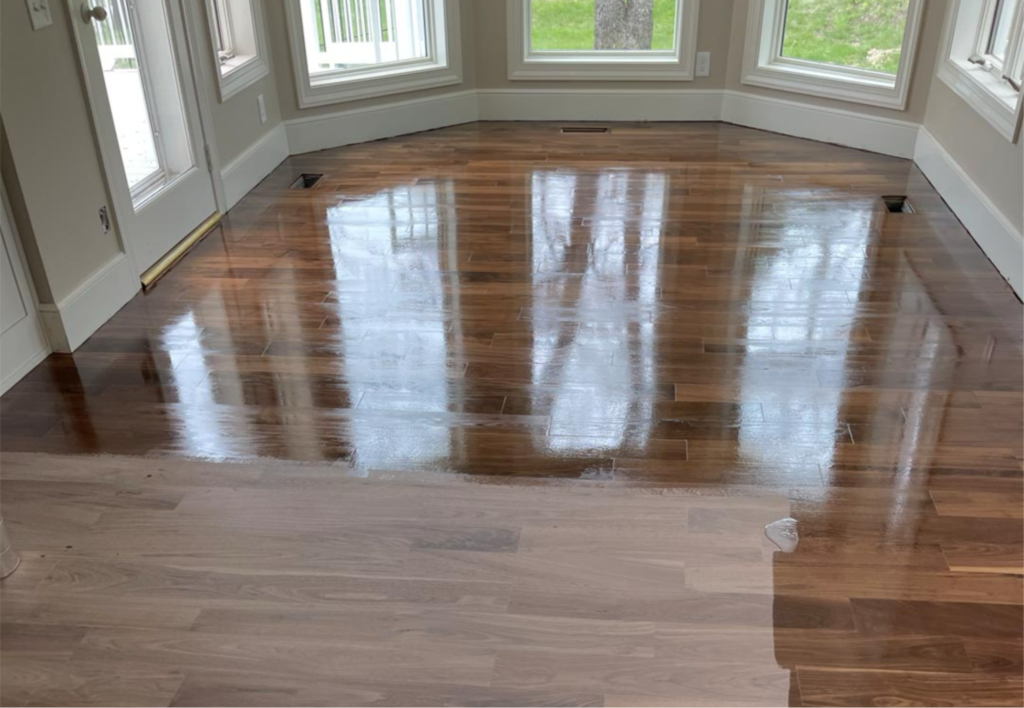
Look out for:
- A dull, cloudy appearance
- Scratches you can feel with your fingernail
- Peeling or worn-out finish
- Light stains or fading
- Minor water damage
If the wood is still solid and not warped, you can likely refinish and save it.
When It’s Time to Replace Instead
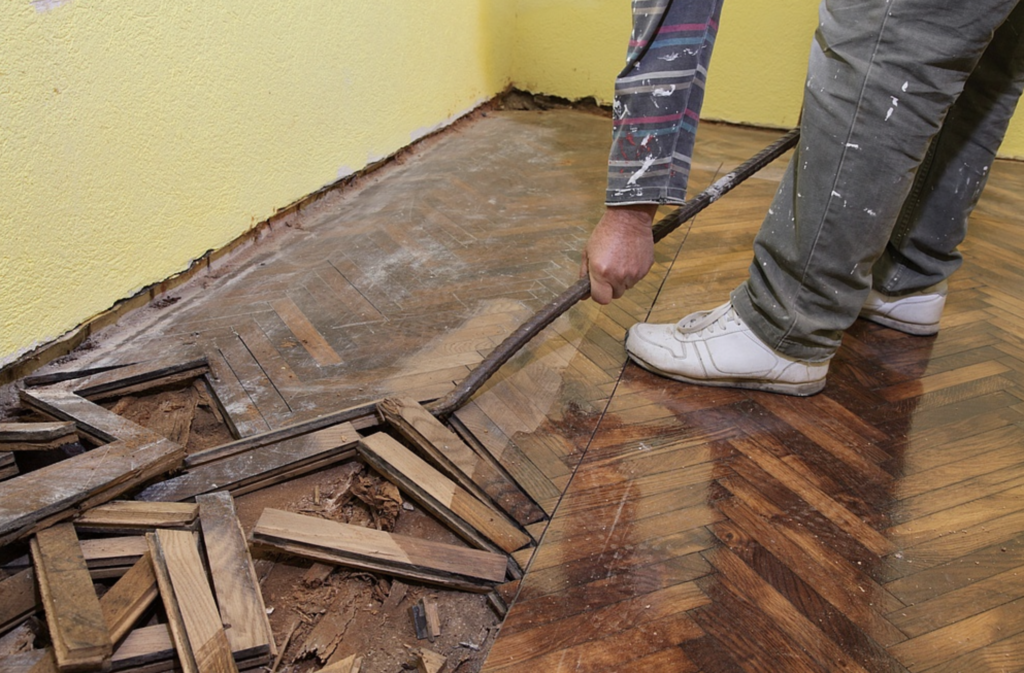
Sometimes refinishing won’t cut it. You may need a full replacement if:
- There’s deep water damage, warping, or mold
- The floor has already been sanded too many times
- Engineered floors have a veneer too thin to sand
- Large gaps or movement between boards
Not sure? A professional can tell you if your floors can be saved or need to go.
Final Verdict: Refinishing = Floor Longevity
So, how long does wood flooring last?
▶ With refinishing and maintenance coats:
Expect 80–100+ years for solid hardwood and 30–40 years for engineered.
▶ Without refinishing or proper care:
Plan for 15–30 years, tops.
The secret to making wood floors last? Refinish before it’s too late. Add a maintenance coat every few years, sweep often, and watch for signs of wear.
Ready to Extend the Life of Your Floors?
At Kimminau Wood Floors, we help Kansas City homeowners bring their hardwood floors back to life. Whether you need a light maintenance coat or full refinishing, we’ve got your back.
Book a free floor evaluation today and get expert advice on how to make your floors last for generations.

